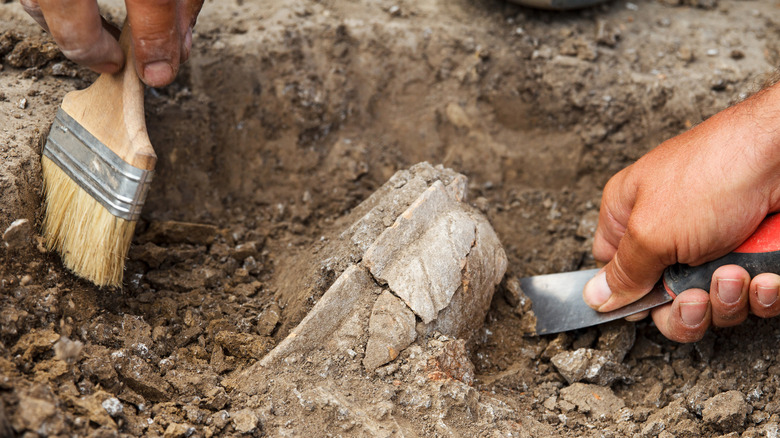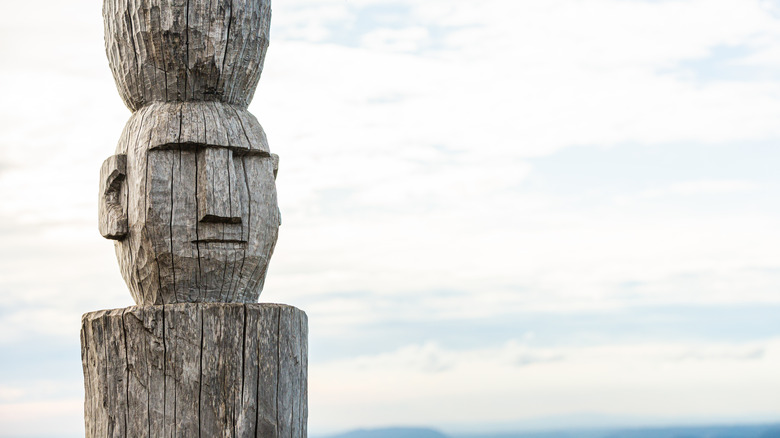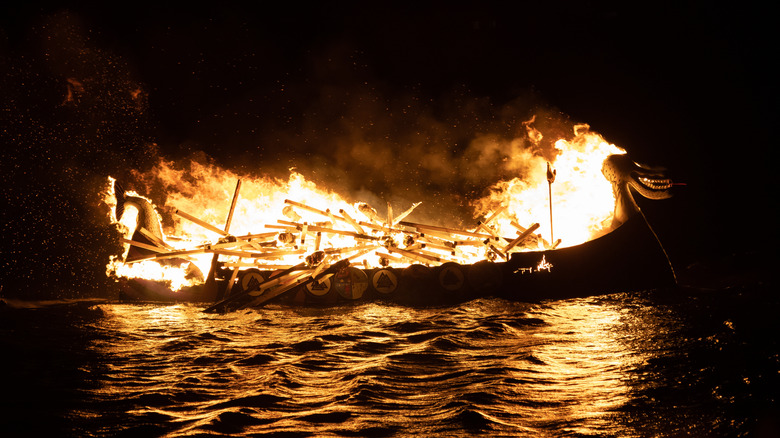The History Of Ritual Canoe Burials
Almost 900 years ago, in windswept Patagonia, near Chile and the icy Pacific, a young woman was buried in a boat. We don't know who she was, exactly. She was an ethnic Mapuche, probably in her early 20s. She may have been painted before burial, or tattooed. But it was the boat that puzzled the archaeologists who, in 2022, discovered her remains. It was a more or less functional "wampo," or Mapuche canoe, hewn from the trunk of a single beech tree. The archaeologists' report, published in PLOS, describes how she was laid on her back with her head in the bow, resting against a clay jar. Mussel shells had been scattered underneath her, against the floor of the canoe. This boat, with its cargo of death, was then lowered into a hole in the earth.
Canoe burial is a well-attested phenomenon, no stranger than many other ways of disposing of the dead. This was the first time such a body had been found in Argentina, and in such fine condition.
A voyage to the other world
Why a boat, though? According to the researchers, this was probably a ritual way of sending the deceased on her final journey, to the land of the dead. Mapuche mythology located the underworld as literally over the ocean.
But the Mapuche were not the only nation in the Americas to practice canoe funerals. Thousands of miles north, out of contact with Patagonia, the Chinook of modern Oregon deposited their dead in boats as well. A monograph hosted by the Oregon Historical Society reports that as late as the early 1800s, the Chinook would lay a corpse in a canoe, wrapped in blankets, and hang the boat from high posts. (This also seems like a variation of tree burial, practiced across the Great Plains.) Once the flesh had decayed and disappeared, the family would lower the boat, retrieve the bones, and bury them. Sometimes they would place the bundle of bones back in the canoe, and bury them all. Lewis and Clark observed this custom too, in January 1806 (via Discover Lewis & Clark).
A worldwide custom
Similar practices exist all over the world. The Vikings famously sent their dead chiefs to Valhalla in boats laden with treasure, which they burned or, more commonly, buried (per History). There seems to have been actual boat burial, in the Mapuche style, in England. A short, 1973 article in the journal Antiquity tells of a canoe burial there. Some men digging in a peat bog in Lancashire uncovered a canoe-like boat containing a body wrapped in woolen blankets.
It must have been a Germanic burial, because researchers would make a gruesome discovery: The man had been buried with 12 or more human nails. This may be related to the Norse custom of clipping the finger and toenails of the recently deceased. The giants who would battle the gods and end the world, according to Norse myth, would arrive in a ship made of human nails; the more shipbuilding material they had on hand, the bigger their horrible ship would be.


